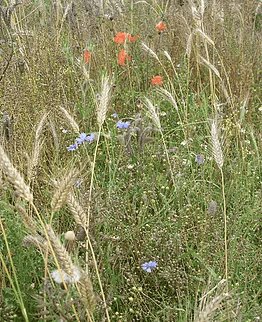The GLAS Scheme which is funded through the Rural Development Programme has a number of specifically designed measures which address water quality, climate change and biodiversity.
Under the GLAS scheme (Tranche 1 & 2) farmers have undertaken to sow a staggering 13,779 ha of wild bird cover. The payment rate for sowing wild bird cover is €900/ha per year. The maximum area for payment is 3 ha.
Wild bird cover is a spring crop which provides a valuable food source to birds and other fauna throughout the winter period. The crop is not harvested.
Apart from providing a food source for birds it has the added advantage of providing winter cover on land which reduces soil erosion and leaching. Wild bird cover does not require large quantities of fertiliser. The vibrant colours in mustard, oilseed rape and kale attract many insects including bees which pollinate other agricultural crops.
Thomas O’Halloran a mixed livestock farmer from Ballyhugh, Gort, Go. Galway joined the GLAS scheme in 2015 choosing to sow 1.87ha of wild bird cover as part of his GLAS plan. The field chosen was selected because it contains some Ash trees and there is a dense hedgerow along the boundary of the field. The dense cover that surrounds the field is home to many birds.
The mix used contained oats and Linseed. The mix was sown at 75kg/ha oats and 15kg/ha Linseed. The linseed became a vibrant blue colour which helped to attract bees for pollination.
“I have noticed an increase in pheasants on the land since the wild bird cover crop was sown. There has also been an increase in butterflies and bees on the area planted in wild bird cover”.
Click here to download more information on the GLAS scheme.


